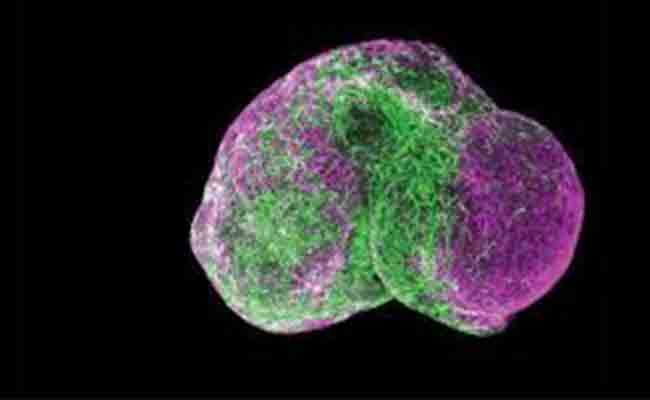By Dr. Pablo Barrecheguren (@pjbarrecheguren)
One of the biggest obstacles facing neuroscience is the difficulty of obtaining in vivo information from a human brain. Certainly there are techniques, such as functional magnetic resonance or intracranial implantation of electrodes, that allow us to obtain information on brain activity…, but the real challenge is at the molecular level: to be able to analyze cell development and interconnection while it is happening, until now the possibilities are mostly reduced to post-mortem studies or cell cultures whose results often cannot be extrapolated to the behavior of a human brain as a whole. In order to tackle this problem, one of the best options is the cerebral organids.
Brain Organoids
What are organoids?
Organoids are self-assembled cellular aggregates that are formed from stem cells, and which have the main characteristic that they reproduce to some degree the architecture and cellular composition of the intended organ.
Initially one of the fields of research was the creation of organoids that reproduce intestinal epithelium, but now the technique has expanded to other organs, one of the most interesting areas being the cerebral organoids.
Methods of organoid manufacture
There are two main ways to manufacture them:
-
- Non-guided techniques: these are based on pluripotent human stem cells that are cultured in vitro, limiting to a minimum the use of external biochemical signals that direct growth. This results in great variability which in some cases leads to the formation of organoids with a cell composition quite similar to that of a developing human brain.
- Guided techniques: we start from the same base but there is a greater intervention in the development of the organoid through the use of biomolecules. This results in the production of much more specific organoids, which have cellular compositions that mimic specific parts of a developing human brain.
In general, these organoids are able to reproduce to a certain level the cellular and structural composition of a human brain. In addition, the gene expression analysis data of these organoids as a whole partially coincide with those of a developing human brain.
Limitations of these models
However, it should not be forgotten that these models have several very important limitations, for example:
-
- Organoids are very small. They have an approximate size of about 4 mm while the human cerebral cortex is about 15 cm in diameter. From this situation derive many structural differences that separate an organoid from a human brain.
- They do not develop any type of vasculature. Brain organoids do not have blood vessels per se, and even when cultivated together with epithelial cells no functional capillaries have been created within the tissue. Already the lack of vessels is a big structural difference, but it also generates an additional problem: the organoid can only acquire nutrients from its external side, which means that at a certain point of growth the cells in the deepest parts of the organoid develop necrosis due to lack of nourishment.
- The cells of the organoid reproduce the cellular state of a developing brain, giving us scarce information about an adult or senior brain.
Important technique in biomedical research
However, despite all these limitations, organoids are posited as one of the major techniques of biomedical research for three reasons.
-
- Firstly, they are manufactured from pluripotent stem cells, and this cell type can currently be obtained directly from adult cells that are then reprogrammed in the laboratory (e.g. using a sample of blood cells, which are then reprogrammed to become what are known as induced pluripotent stem cells). This has allowed the creation of organoids that reproduce congenital malformations such as microcephaly, with these organoids being used together with viral cultures to investigate the neuronal effects of the Zika virus.
- Secondly, these models serve to study brain development and there are clinical conditions such as schizophrenia or autism spectrum disorders that are already being studied.
- And thirdly, brain organoids can be created from other animals, which facilitates evolutionary studies by comparing different species.
Brain organoids are currently very valuable research tools and the work that combines them with other techniques has great potential. However, when reading published works on this area, it should never be forgotten that they are a model of experimentation and, although they are called “miniature brains”, they also have many essential differences with an adult human brain.
References
- Elizabeth Di Lullo and Arnold R. Kriegstein. The use of brain organoids to investigate neural development and disease. Nat Rev Neurosci. 2017 October; 18(10): 573–584
- Harpreet Setia, Alysson R. Muotri. Brain organoids as a model system for human neurodevelopment and disease. Seminars in Cell and Developmental Biology (2019)
- Xuyu Qian, Hongjun Song and Guo-li Ming. Brain organoids: advances, applications and challenges. Development (2019) 146, dev166074
If you liked this article by doctor in biomedice, Pablo Barrecheguren, you may want to check out other articles by him:
- All About Memory
- Parkinson’s Smell
- Painting Alzheimer’s
- Video games help treat neurological problems: a pioneering example for combating lazy eye
